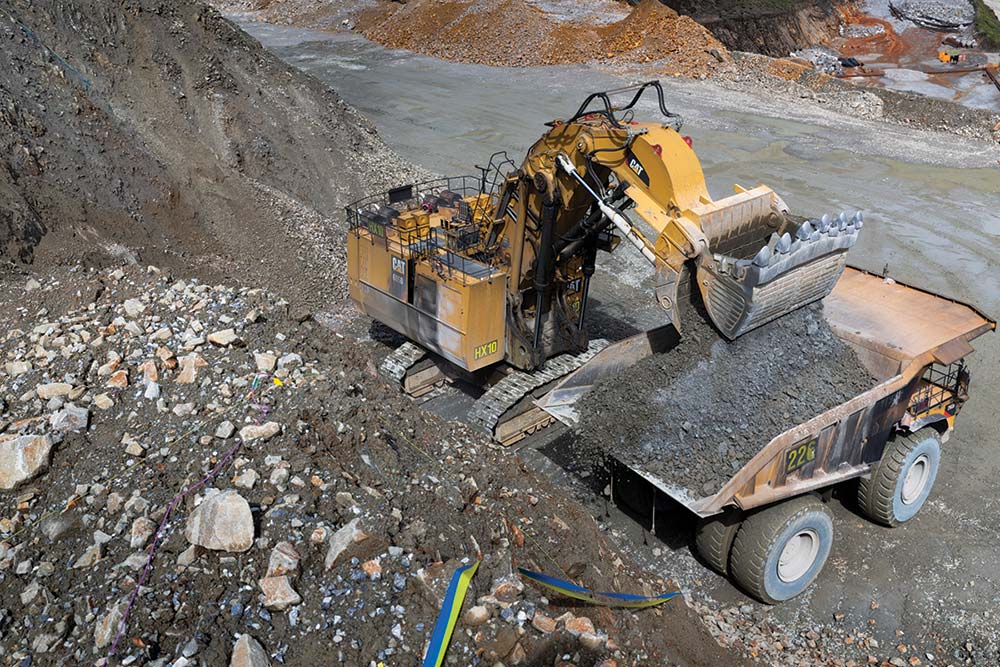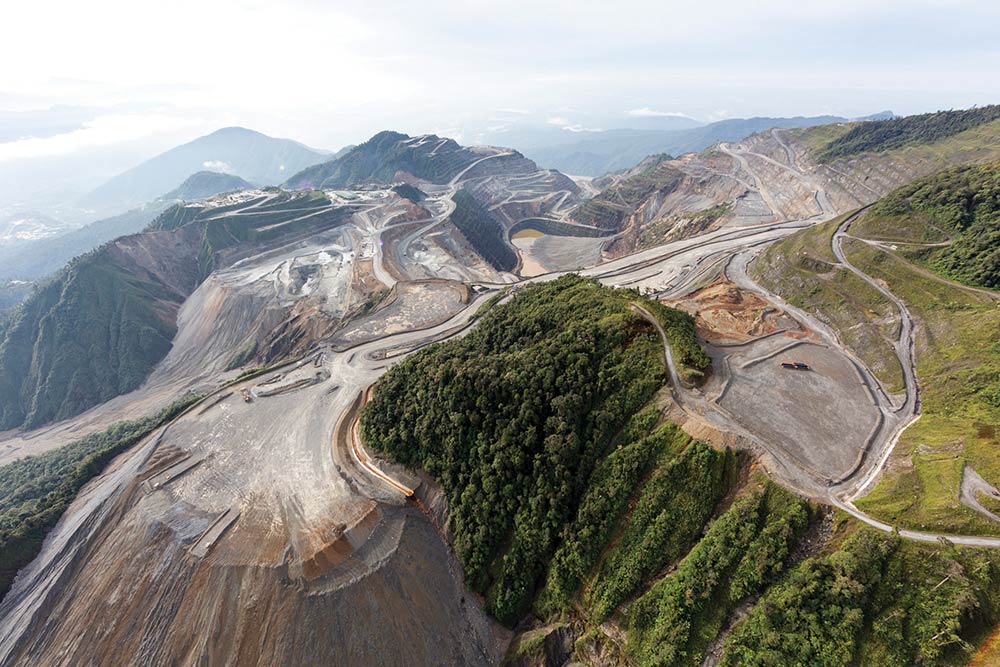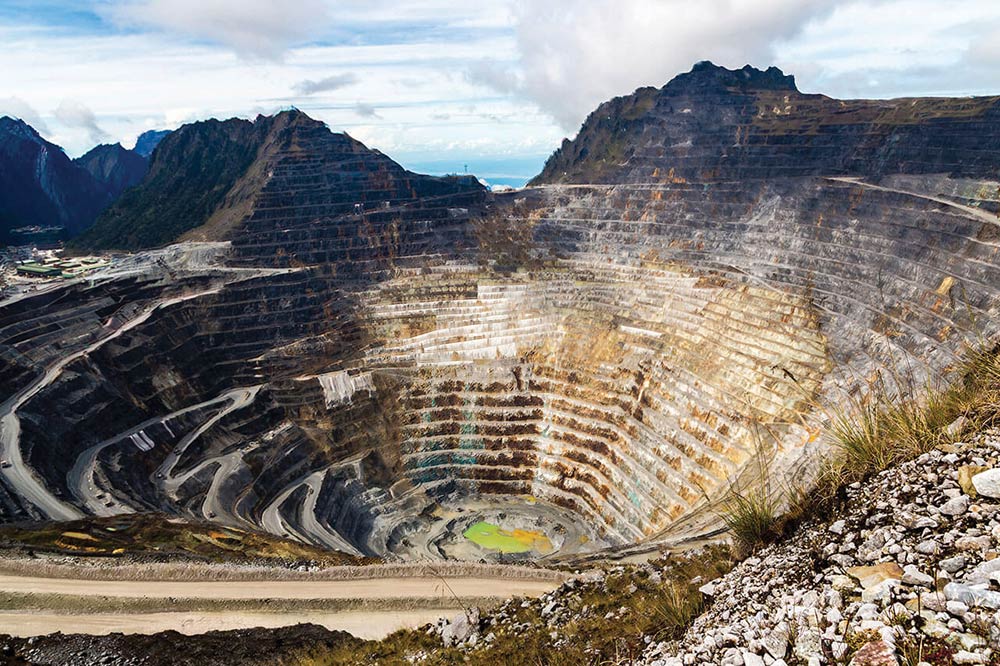Digital Inspection for Construction Management
The Client
Ok Tedi Mining Limited (OTML) was established in 1981 to mine the Mt. Fubilan copper-gold ore-body discovered in Papua New Guinea’s (PNG) Star Mountains, 16km east of the Indonesian border.
OTML is a major producer of copper concentrate for the world smelting and refinery market in Germany, India, Japan, South Korea and the Philippines. The mine exports copper as a concentrate with contained gold and silver.
Between 1984 and 2019, Ok Tedi has produced 4.93 million tonnes of copper, 15.1 million ounces of gold and 34.2 million ounces of silver.
OTML engaged Inspectivity to provide a Completion Management System (CMS) for planning and monitoring of construction and commissioning activities and to ensure a smooth handover of digital information.
The Challenge
The Ok Tedi Mine is the longest-running open-pit copper, gold and silver mine in PNG. Ore extracted as part of mine operations is processed via gyratory primary crusher, parallel grinding modules, flotation and gravity separation, and sulphur removal. Current production is expected to continue beyond the design life of 2024, facilitated by a large scale expansion project.
Seeking an alternative to traditional CMS systems, OTML agreed Inspectivity’s real-time mobile and cloud technology for managing inspection activity on their expansion project could improve productivity, data quality and set the foundation for a strong digital future. Key challenges included:
- Remote and mountainous site location with difficult access
- Typical problems and inefficiencies associated with paper-based inspection test report (ITR) workflows
- Inability to support a multi-site and multi-user execution basis for global locations including Papua New Guinea, Australia and China
- Manual status reporting via Excel
- Poor support by legacy CMS for managing completions activity at vendor works
- Collaboration difficulties presented throughout the lifecycle of inspection and punch list rectification
- Inefficiency associating, storing and making accessible other documentation as part of ITR activity
- Productivity issues with ITR generation and risk of error in manual assembly of reports
- Missed opportunities during the handover of project completions data for further ‘intelligent’ use in operational systems and processes
- Possibility of “process deviation” when following paper-based workflows
The Inspectivity Solution
Analysis and Data Setup
At the outset, Inspectivity worked closely with OTML to provide both a detailed understanding of the Inspectivity Platform solution and develop a framework around the required analysis for implementation.
Analysis work included:
- Reviewing project scope and assisting client focal points in the preparation of asset hierarchy by area, system and sub-system
- Planning approach for modelling of commissioning loops throughout asset hierarchy
- Identifying required engineering disciplines and scopes of inspection for each
- Understanding the required inspection matrix and providing guidance in preparation of digital ITR forms
- Assess CMS user requirements and identify required security roles for access
- Preparing scope for customised dashboard reporting

Configuration and Development
During this phase, Inspectivity worked closely with OTML to assist configuration of the required asset hierarchy and digital inspection artefacts. Using out of the box import capabilities, OTML focal points were able to prepare an import schedule for asset hierarchy elements, including trialling sample imports in a “like for like” staging environment. This ensured final “production” outcomes matched OTML inspection philosophy requirements.
The expansion project required all major engineering disciplines presenting significant ITR scope for data capture, verification and visibility through all phases of construction, pre-commissioning and commissioning. Using our powerful form building capability, all ITR scopes and project phases were successfully captured in the new digital inspection platform. As with other elements of configuration, OTML super users were able to continuously test and refine new digital ITR forms via the staging environment to ensure that results are recorded (including how issues or observations are captured) with very short turnaround times. To expedite efficiency during Platform set up, the client leveraged offshore resources and imported prepared Excel data files using our advanced Platform functions.
In addition to the configuration scope, Inspectivity developed designs for customised dashboard reporting to enable real-time status visibility including:
- Overall inspection status by discipline and by commissioning loop
- “Closed out” vs “Outstanding” punch list status
- Total punch list status by commissioning loop and category (A, B, C, D)
The Outcome
Making the move to an advanced cloud and mobile approach for completion management provides a significant upside in terms of efficiency, quality, safety and control. It accelerates responsiveness, improves decision-making support and helps to reduce costs with new intelligent processes. The Inspectivity Platform has provided a Completion Management System supporting:
- 8 engineering disciplines including piping, mechanical, electrical, instrumentation, architectural and process control. Covering 98 categories of equipment.
- 441 digital inspection formats for performing inspections throughout construction, pre-commissioning, commissioning and project handover.
- Automated reporting to support the completions teams in achieving higher throughput when compared with a paper-based approach. Inspector desk time is reduced to almost nil.
- A digital workflow that removes chance of error in data handling and translation commanding de-personalised and non-subjective results. Project risk is reduced through higher-quality data, full audit trail and greater visibility of punch item status.
- A consistent and disciplined process has allowed the completions teams to learn the system and inspection philosophy with minimal assistance. Formal training to power user team only.
- Real-time collaboration between the remote site team in Papua New Guinea, engineering teams in Australia and global vendors.
- Real-time dashboards for commissioning loop and punch list status reporting. OTML management and project teams can gain valuable insights and drill down to underlying data at a button click.
- Enterprise workflows that drive efficiencies in planning and scheduling of verification activities, reviews and rework loops as well as engineering clarifications.
- Punch list management to enable assessment and closeout in both the office and in the field. Inspectors are able to track closeouts with photographic evidence and supplementary documentation supporting resolution.
Training, Deployment and Support
Inspectivity consultants are hands-on with client implementations and ensure that knowledge transfer is easy for focal points.
While remote classroom-based training sessions were held for the super-user, the intuitive design of the Platform meant that no formal training was required for field inspection teams who have access to an online knowledge-base 24/7 with detailed instructions on all aspects of Platform usage.
Configuration of the Inspectivity Platform for OTML completions management was completed in October 2019. Inspectivity Support (Perth, Australia) maintains open communication channels (telephone, email and 24-hour service desk) with OTML platform users to ensure any issues and requirements are handled in a timely manner.

Future Operations and Integration
The flexibility of our Platform means the same enterprise software can also be leveraged to support future asset management projects and operations. Our inbuilt API will support full integration to operator systems for ERP and reliability/integrity management – The same digital inspection platform supporting construction as well as ongoing efficient and streamlined asset management.
Inspectivity maintains a strong partnership with Ok Tedi Mining Limited and is proud to provide advanced completion management and digital inspection technologies to support their mining expansion.
